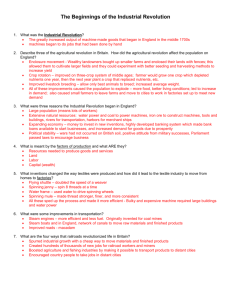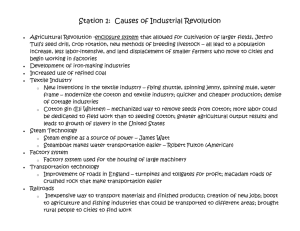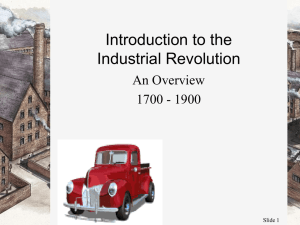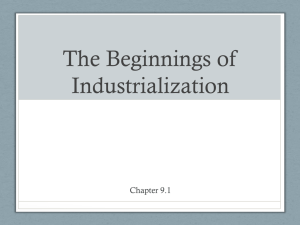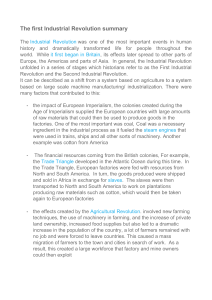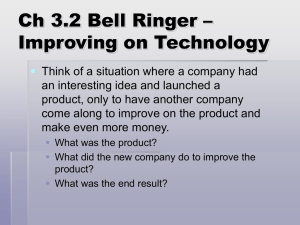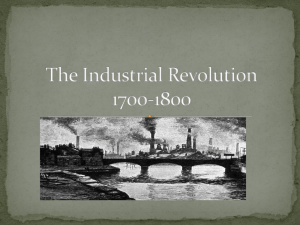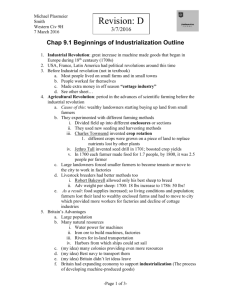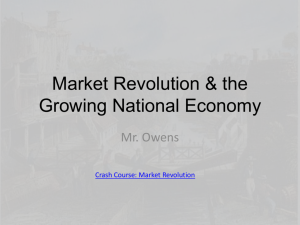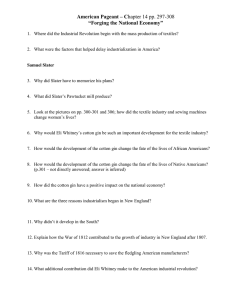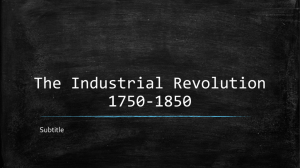World History 9 Notes Chapter 25 Section 1 “The Beginnings of the
advertisement
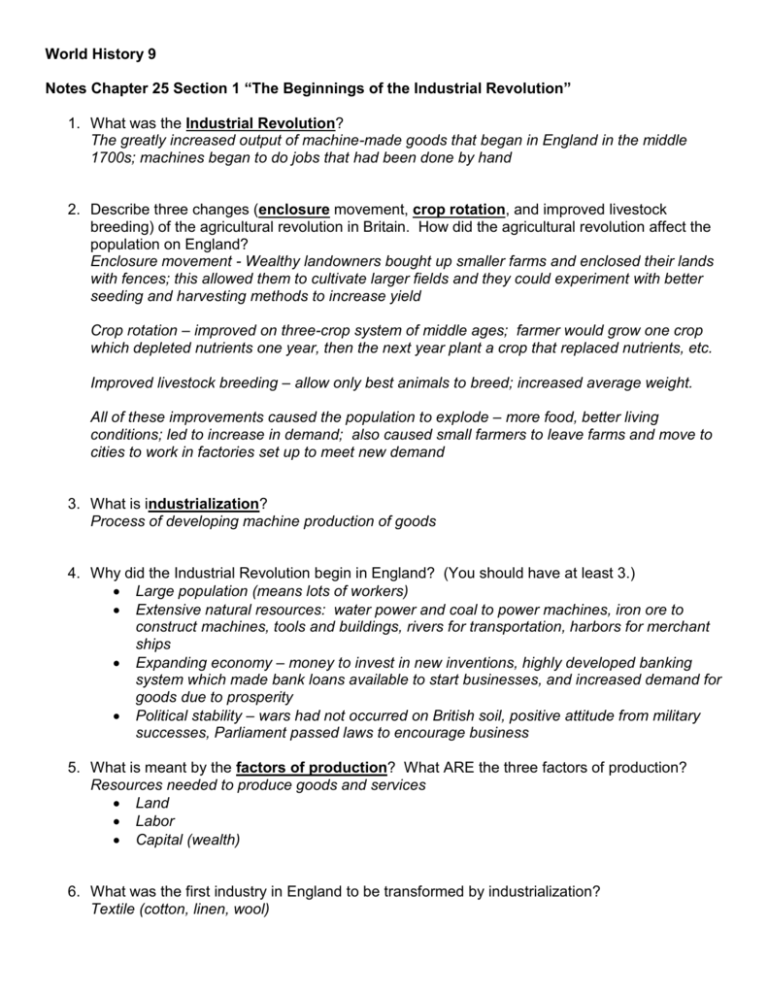
World History 9 Notes Chapter 25 Section 1 “The Beginnings of the Industrial Revolution” 1. What was the Industrial Revolution? The greatly increased output of machine-made goods that began in England in the middle 1700s; machines began to do jobs that had been done by hand 2. Describe three changes (enclosure movement, crop rotation, and improved livestock breeding) of the agricultural revolution in Britain. How did the agricultural revolution affect the population on England? Enclosure movement - Wealthy landowners bought up smaller farms and enclosed their lands with fences; this allowed them to cultivate larger fields and they could experiment with better seeding and harvesting methods to increase yield Crop rotation – improved on three-crop system of middle ages; farmer would grow one crop which depleted nutrients one year, then the next year plant a crop that replaced nutrients, etc. Improved livestock breeding – allow only best animals to breed; increased average weight. All of these improvements caused the population to explode – more food, better living conditions; led to increase in demand; also caused small farmers to leave farms and move to cities to work in factories set up to meet new demand 3. What is industrialization? Process of developing machine production of goods 4. Why did the Industrial Revolution begin in England? (You should have at least 3.) Large population (means lots of workers) Extensive natural resources: water power and coal to power machines, iron ore to construct machines, tools and buildings, rivers for transportation, harbors for merchant ships Expanding economy – money to invest in new inventions, highly developed banking system which made bank loans available to start businesses, and increased demand for goods due to prosperity Political stability – wars had not occurred on British soil, positive attitude from military successes, Parliament passed laws to encourage business 5. What is meant by the factors of production? What ARE the three factors of production? Resources needed to produce goods and services Land Labor Capital (wealth) 6. What was the first industry in England to be transformed by industrialization? Textile (cotton, linen, wool) 7. List the inventions that changed the textile industry. How did they change the way textiles were produced? Why did the textile industry move from homes to factories? Flying shuttle – doubled the speed of a weaver Spinning jenny – spin 8 threads at a time Water frame – used water to drive spinning wheels Spinning mule – made thread stronger, finer, and more consistent All these sped up the process and made it more efficient Bulky and expensive machine required large buildings and water power 8. Think: How were England’s cotton industry and America’s cotton growers linked? Needed each other. Farmers in southern US grew the cotton, factories in England wove it 9. What were some improvements in transportation? Steam engines – more efficient and less fuel. Originally invented for coal mines Steam boats and in England, network of canals to move raw materials and finished products Improved roads - macadam 10. What is an entrepreneur? Person who organizes, manages, and takes on the risk of a business 11. What are the four ways that railroads revolutionized life in Britain? Spurred industrial growth with a cheap way to move materials and finished products Created hundreds of thousands of new jobs for railroad workers and miners Boosted agriculture and fishing industries by making it possible to transport products to distant cities Encouraged country people to take jobs in distant cities
